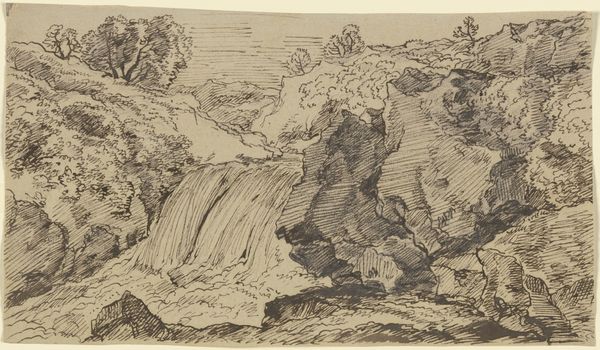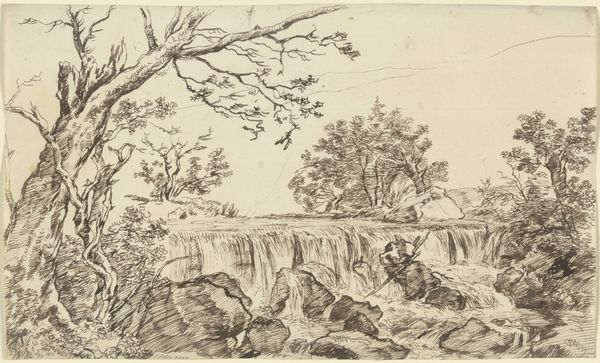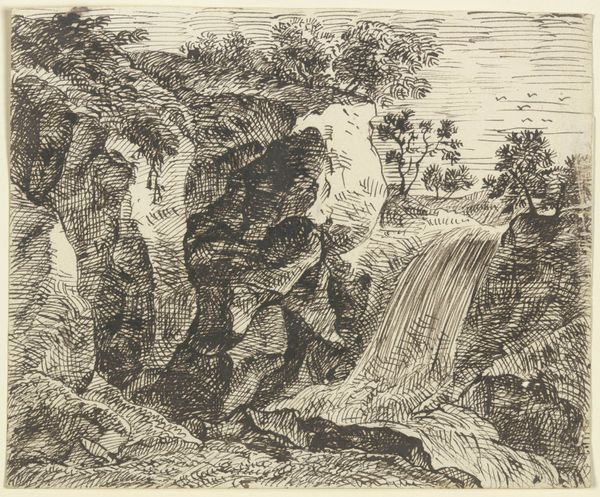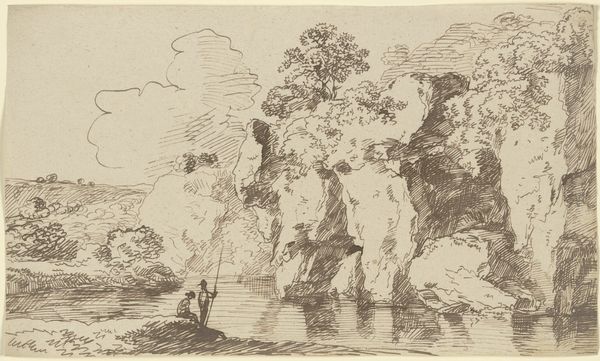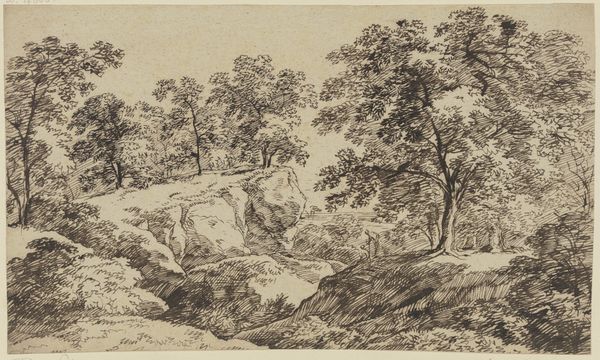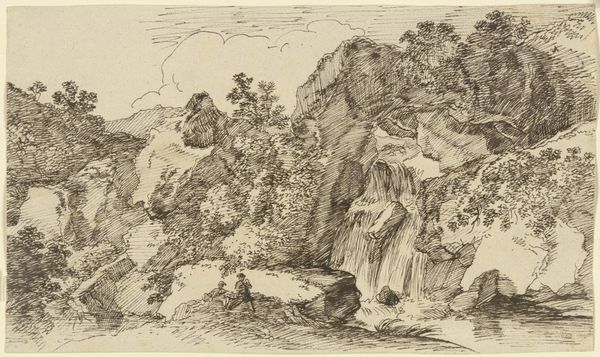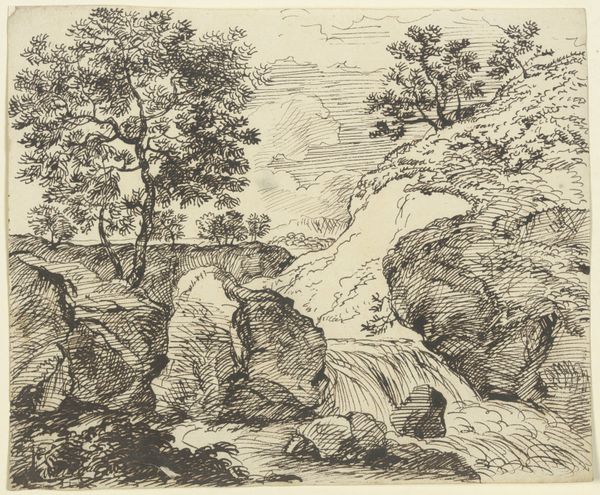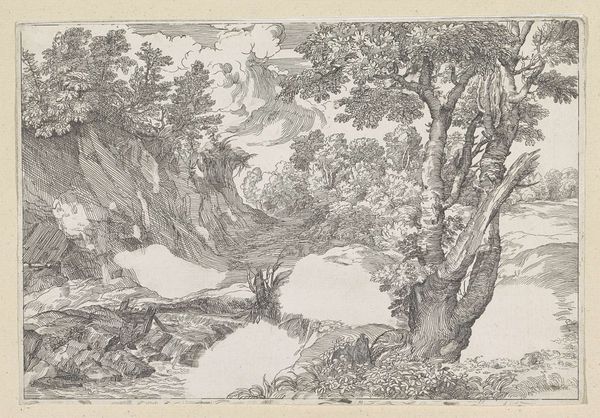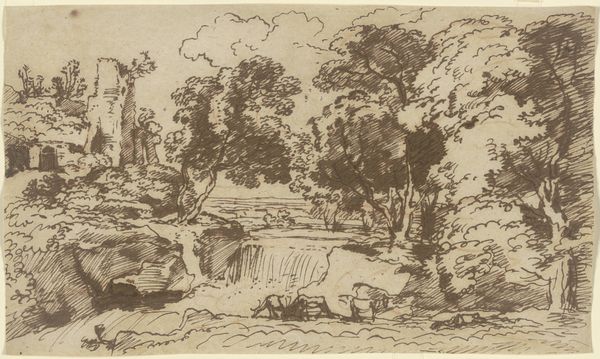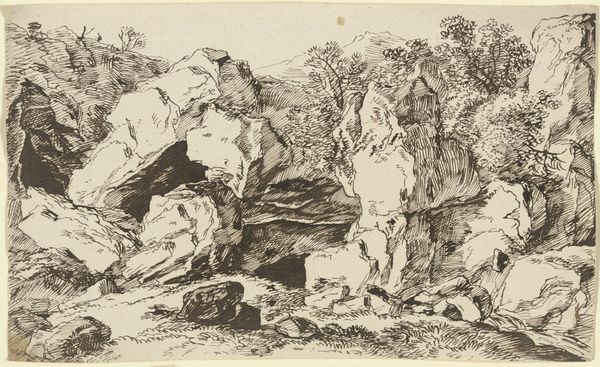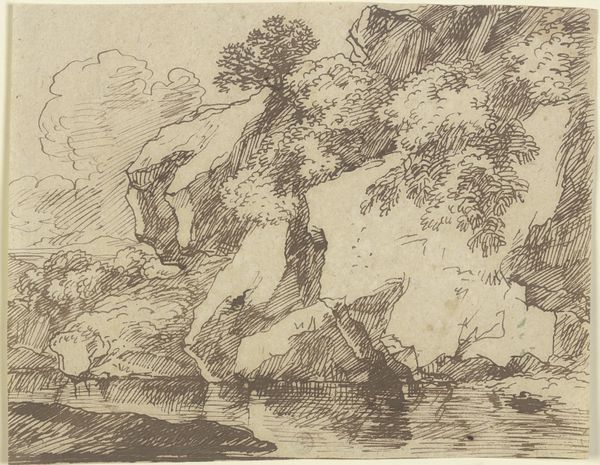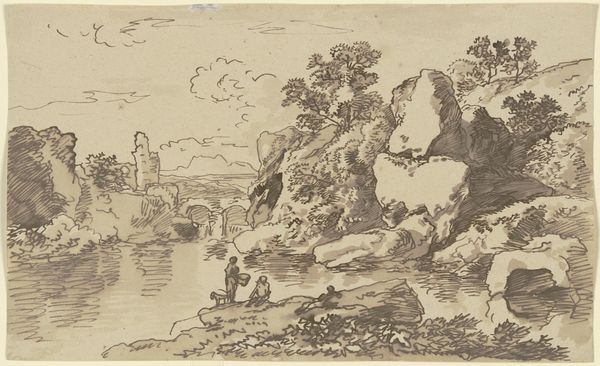
drawing, etching, intaglio, ink
#
drawing
#
pen sketch
#
etching
#
intaglio
#
landscape
#
ink
#
pencil drawing
#
15_18th-century
Copyright: Public Domain
Editor: This is Franz Kobell's "Waterfall in a Mountainous Landscape," an etching in ink from the 18th century, housed here at the Städel Museum. I find it striking how he manages to convey such a grand scene with such delicate lines. What do you make of this piece? Curator: It’s a fascinating example of how the 18th century engaged with the sublime in nature through the lens of artistic production. Think about it – what function did landscapes serve in the societal and artistic circles of that time? Editor: Perhaps it was about demonstrating power or ownership over nature, or about creating a sense of awe and wonder among viewers. I notice the dramatic contrasts of light and shadow and the careful composition of the waterfall; I imagine that makes the sublime, beautiful and frightening, easier to consume. Curator: Precisely. And who was consuming these images? Etchings, unlike unique paintings, could be reproduced and distributed. Consider how this accessibility influenced the perception of nature. Landscapes, such as this, became widely available as both artistic prints and in book illustrations for popular audiences. They created and propagated certain understandings and desires about what constituted idealized nature. Does it then alter how we view the wild when it’s delivered to our parlors, controlled and neatened in these etchings? Editor: It’s a bit like taming the wild! Taking ownership, really, and maybe making it into something profitable. Like, "Come and see this exotic view!" So the image itself then has economic value? Curator: Absolutely! The sublime landscape became a commodity. Did Kobell aim to convey the pure, unadulterated experience of nature, or was he producing for a market already shaped by certain expectations of natural beauty? Editor: So by understanding the culture around art and the economics, we can understand the artist's role in society? Curator: Exactly. And it encourages us to see art not as isolated creations, but as deeply connected to the socio-political and economic context in which they were created and circulated. Editor: That adds a new layer to my appreciation, thanks. Curator: My pleasure. It's rewarding to uncover these layers.
Comments
No comments
Be the first to comment and join the conversation on the ultimate creative platform.
